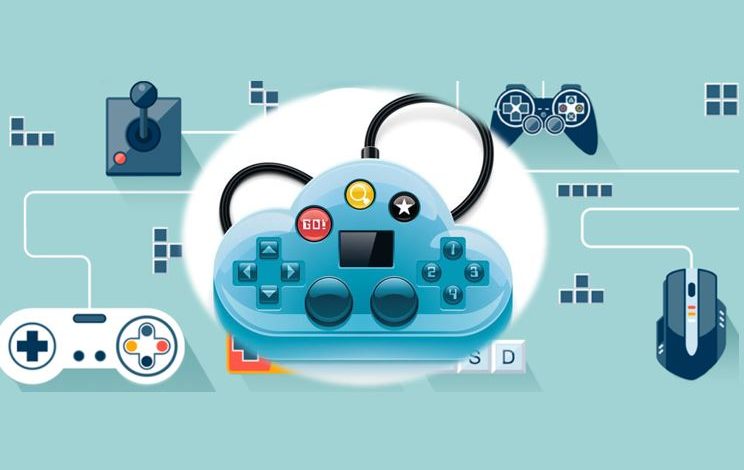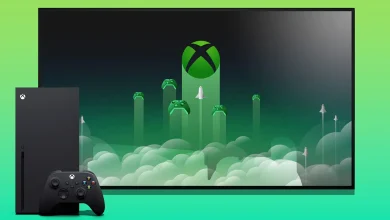Cloud Gaming and Streaming: Redefining the Future of Interactive Entertainment
Redefining the Future of Interactive Entertainment

Introduction:
Cloud gaming and streaming have emerged as transformative technologies, revolutionizing the way people access, play, and experience video games. By harnessing the power of cloud computing and high-speed internet connections, cloud gaming platforms offer players unprecedented access to a vast library of games without the need for expensive hardware or downloads. This article explores the evolution of cloud gaming and streaming, its impact on the gaming industry, and the potential implications for the future of interactive entertainment.
The Rise of Cloud Gaming:
Cloud gaming has its roots in the early 2000s, with services like OnLive and Gaikai pioneering the concept of streaming video games over the internet. However, it was not until the mid-2010s that cloud gaming gained mainstream attention, with the launch of platforms like PlayStation Now, GeForce Now, and Google Stadia. These platforms leverage powerful cloud infrastructure to render games remotely and stream them to players’ devices in real-time, allowing for seamless, low-latency gaming experiences on a wide range of devices, including smartphones, tablets, PCs, and smart TVs.
The Rise of Cloud Gaming: A Revolution in Interactive Entertainment
Introduction:
The rise of cloud gaming represents a monumental shift in the gaming landscape, offering players unprecedented access to high-quality gaming experiences without the need for expensive hardware or downloads. This article explores the evolution of cloud gaming, its impact on the gaming industry, and the potential implications for the future of interactive entertainment.
The Genesis of Cloud Gaming:
Cloud gaming has its roots in the early 2000s, with the emergence of services like OnLive and Gaikai pioneering the concept of streaming video games over the internet. These platforms utilized remote servers to render games and stream them to players’ devices, enabling users to play games on low-end PCs or even TVs with minimal latency. While these early attempts at cloud gaming faced technical limitations and infrastructure challenges, they laid the groundwork for future innovations in the space.
Key Technological Advancements:
The rise of cloud gaming has been fueled by several key technological advancements:
Improved Internet Infrastructure:
The proliferation of high-speed internet connections, coupled with the rollout of 5G networks, has significantly improved the reliability and bandwidth available for cloud gaming services. Players can now enjoy smooth, low-latency gaming experiences on a wide range of devices, from smartphones to smart TVs.
Advances in Cloud Computing:
The maturation of cloud computing technology has enabled cloud gaming platforms to leverage powerful remote servers and data centers to render games in real-time and stream them to players’ devices. These servers can handle the intensive processing and rendering required for high-resolution graphics and complex game simulations, delivering immersive gaming experiences without the need for local hardware.
Compression and Streaming Technologies:
Innovations in video compression and streaming technologies have optimized the delivery of gaming content over the internet, reducing latency and bandwidth requirements while maintaining high-quality graphics and audio. Adaptive bitrate streaming, in particular, adjusts the video quality dynamically based on the player’s internet connection speed, ensuring a seamless experience across varying network conditions.
The Impact on the Gaming Industry:
The rise of cloud gaming has had a profound impact on the gaming industry, disrupting traditional business models and opening up new opportunities for players, developers, and publishers:
Accessibility and Affordability:
Cloud gaming platforms offer players instant access to a vast library of games for a fixed monthly subscription fee, eliminating the need for expensive hardware purchases or individual game purchases. This accessibility makes gaming more affordable and inclusive, democratizing access to gaming experiences for players around the world.
Expanded Market Reach:
Cloud gaming has the potential to reach new audiences beyond traditional gaming demographics, including casual gamers, mobile users, and those with limited access to gaming hardware. By enabling gameplay on a wide range of devices, cloud gaming platforms can tap into untapped markets and expand the reach of gaming to new audiences.
New Revenue Streams:
Cloud gaming introduces new revenue streams for developers and publishers, including subscription-based models, in-game purchases, and advertising. Developers can reach a larger audience and generate recurring revenue through subscription fees, while publishers can monetize their games through microtransactions, DLCs, and other digital content.
Challenges and Limitations:
Despite its many benefits, cloud gaming still faces several challenges and limitations:
Latency and Input Lag:
The round-trip time for input commands to travel from the player’s device to the remote servers and back can introduce latency and input lag, affecting the responsiveness and precision of gameplay.
Internet Connectivity:
Cloud gaming relies heavily on high-speed internet connections, and players with slow or unreliable internet may experience lag, buffering, and poor video quality.
Content Licensing and Exclusivity:
Cloud gaming platforms must negotiate licensing agreements with game publishers and developers to offer their games on the service, which can be complex and expensive. Exclusive titles and partnerships may limit the availability of certain games on competing platforms.
The Future of Cloud Gaming:
Despite these challenges, the future of cloud gaming looks promising, with continued advancements in technology, infrastructure, and consumer adoption driving its growth and evolution. As internet speeds continue to increase and 5G networks become more widespread, the barriers to entry for cloud gaming are expected to diminish, making it more accessible and appealing to a broader audience. Moreover, innovations in edge computing, AI-driven content delivery, and virtualization technologies promise to further improve the performance, reliability, and scalability of cloud gaming platforms.
Conclusion:
The rise of cloud gaming represents a paradigm shift in the gaming industry, offering players unprecedented access to high-quality gaming experiences on a wide range of devices. By leveraging the power of cloud computing and high-speed internet connections, cloud gaming platforms are redefining the way people play, interact, and experience video games. As cloud gaming continues to evolve and mature, it will undoubtedly play a central role in shaping the future of interactive entertainment, unlocking new opportunities for players, developers, and publishers alike.
How Cloud Gaming Works:
Cloud gaming works by offloading the processing and rendering of games to remote servers in data centers, which then stream the gameplay video to players’ devices over the internet. Players interact with the game using their controllers or keyboards, sending input commands to the cloud servers, which process them and update the game state accordingly. The rendered video frames are then compressed and streamed back to the player’s device, where they are decoded and displayed in real-time, creating the illusion of playing the game locally.
Key Benefits of Cloud Gaming:
Cloud gaming offers several key benefits that differentiate it from traditional gaming platforms:
Accessibility:
Cloud gaming eliminates the need for expensive gaming hardware, allowing players to access high-quality gaming experiences on a wide range of devices, including low-end PCs, smartphones, and tablets.
Convenience:
With cloud gaming, players can instantly access a vast library of games without the need for downloads or installations, making it easy to jump into gaming sessions anytime, anywhere.
Flexibility:
Cloud gaming platforms offer subscription-based models, allowing players to access a rotating selection of games for a fixed monthly fee, similar to streaming services like Netflix or Spotify.
Performance:
Cloud gaming platforms leverage powerful cloud infrastructure to deliver high-resolution graphics, smooth frame rates, and low-latency gameplay, even on devices with limited processing power.
Challenges and Limitations:
Despite its many benefits, cloud gaming still faces several challenges and limitations:
Internet Connectivity:
Cloud gaming relies heavily on high-speed internet connections, and players with slow or unreliable internet may experience lag, latency, and poor video quality.
Input Lag:
The round-trip time for input commands to travel from the player’s device to the cloud servers and back can introduce input lag, affecting the responsiveness and precision of gameplay.
Content Licensing:
Cloud gaming platforms must negotiate licensing agreements with game publishers and developers to offer their games on the service, which can be complex and expensive.
Infrastructure Costs:
Building and maintaining the infrastructure required for cloud gaming, including data centers and server farms, can be costly and resource-intensive.
The Future of Cloud Gaming:
Despite these challenges, cloud gaming continues to gain momentum, fueled by advancements in technology, infrastructure, and consumer adoption. As internet speeds continue to increase and 5G networks roll out globally, the barriers to entry for cloud gaming are expected to diminish, making it more accessible and appealing to a broader audience. Moreover, innovations in edge computing, AI-driven content delivery, and virtualization technologies promise to further improve the performance, reliability, and scalability of cloud gaming platforms.
Conclusion:
Cloud gaming and streaming represent a paradigm shift in the way people access, play, and experience video games. By leveraging the power of cloud computing and high-speed internet connections, cloud gaming platforms offer players unprecedented access to high-quality gaming experiences on a wide range of devices. While challenges remain, the future of cloud gaming is bright, with advancements in technology and infrastructure poised to further enhance accessibility, performance, and convenience for gamers around the world. As cloud gaming continues to evolve and mature, it will undoubtedly play a central role in shaping the future of interactive entertainment.
The Rise of Cloud Gaming: A Revolution in Interactive Entertainment
Introduction:
The rise of cloud gaming represents a monumental shift in the gaming landscape, offering players unprecedented access to high-quality gaming experiences without the need for expensive hardware or downloads. This article explores the evolution of cloud gaming, its impact on the gaming industry, and the potential implications for the future of interactive entertainment.
The Genesis of Cloud Gaming:
Cloud gaming has its roots in the early 2000s, with the emergence of services like OnLive and Gaikai pioneering the concept of streaming video games over the internet. These platforms utilized remote servers to render games and stream them to players’ devices, enabling users to play games on low-end PCs or even TVs with minimal latency. While these early attempts at cloud gaming faced technical limitations and infrastructure challenges, they laid the groundwork for future innovations in the space.
The Future of Cloud Gaming:
Despite these challenges, the future of cloud gaming looks promising, with continued advancements in technology, infrastructure, and consumer adoption driving its growth and evolution. As internet speeds continue to increase and 5G networks become more widespread, the barriers to entry for cloud gaming are expected to diminish, making it more accessible and appealing to a broader audience. Moreover, innovations in edge computing, AI-driven content delivery, and virtualization technologies promise to further improve the performance, reliability, and scalability of cloud gaming platforms.
Conclusion:
The rise of cloud gaming represents a paradigm shift in the gaming industry, offering players unprecedented access to high-quality gaming experiences on a wide range of devices. By leveraging the power of cloud computing and high-speed internet connections, cloud gaming platforms are redefining the way people play, interact, and experience video games. As cloud gaming continues to evolve and mature, it will undoubtedly play a central role in shaping the future of interactive entertainment, unlocking new opportunities for players, developers, and publishers alike.
Introduction to Cloud Gaming and Streaming
Gaming has come a long way since the days of bulky consoles and cartridges. With advancements in technology, the gaming industry has witnessed a paradigm shift towards cloud gaming and streaming. This revolutionary approach to gaming allows players to access their favorite games anytime, anywhere, without the need for expensive hardware or physical copies. In this article, I will delve into the world of cloud gaming and streaming, exploring its evolution, the technology behind it, its advantages and challenges, its impact on the gaming industry, and the future trends that lie ahead.
The Evolution of Gaming: From Consoles to Cloud Gaming
Gaming has evolved tremendously over the years. It started with simple arcade games that captured the hearts of millions. Then came the era of consoles, where players could enjoy immersive gaming experiences at home. But with the advent of cloud gaming and streaming, the need for consoles is gradually diminishing. Cloud gaming allows players to stream games directly from remote servers, eliminating the need for expensive hardware upgrades and physical copies of games. This shift has opened up a world of possibilities for gamers, making gaming more accessible and affordable than ever before.
Understanding the Technology Behind Cloud Gaming and Streaming
Cloud gaming and streaming rely on powerful server infrastructure and high-speed internet connections to deliver a seamless gaming experience. When a player initiates a game, the game is run on a remote server, and the video and audio output are streamed to the player’s device in real-time. This eliminates the need for local processing power and storage, as all the heavy lifting is done on the server side. The player’s inputs are sent back to the server, allowing for real-time interaction with the game. This technology requires robust internet connectivity and low latency to ensure smooth gameplay, making it essential for players to have a reliable internet connection.
Advantages of Cloud Gaming and Streaming for Gamers
One of the biggest advantages of cloud gaming and streaming is the accessibility it offers. Players no longer need to invest in expensive gaming hardware or worry about compatibility issues. With cloud gaming, all you need is a compatible device and a stable internet connection to play your favorite games. This opens up a world of possibilities for gamers, as they can enjoy high-quality gaming experiences on a wide range of devices, including smartphones, tablets, and laptops. Cloud gaming also offers the advantage of instant access to games. Gone are the days of waiting for game installations or updates. With cloud gaming, players can simply log in and start playing, without any delays. This convenience is a game-changer for gamers who value their time and want to jump right into the action. Another advantage of cloud gaming is the ability to play games on the go. Whether you’re on a long commute or waiting for a friend at a café, you can simply take out your smartphone or tablet and start playing. Cloud gaming allows for seamless transition between devices, meaning you can start a game on your computer and continue playing on your phone when you’re on the move. This flexibility gives gamers the freedom to play whenever and wherever they want.
Challenges and Limitations of Cloud Gaming and Streaming
While cloud gaming offers many advantages, it also comes with its fair share of challenges and limitations. One of the main concerns is the reliance on internet connectivity. Since cloud gaming requires a constant connection to the server, any interruption in the internet connection can result in lag or even disconnection from the game. This can be frustrating for players, especially in fast-paced multiplayer games where split-second reactions are crucial. Another challenge is the issue of latency. Latency refers to the delay between a player’s input and the corresponding action in the game. In cloud gaming, this delay is inevitable due to the need for data transmission between the player’s device and the server. While advancements in technology have reduced latency significantly, it can still be noticeable, especially for competitive gamers who require precise and responsive controls. Additionally, the quality of the gaming experience in cloud gaming is heavily dependent on the server infrastructure. If the servers are overloaded or experiencing technical issues, it can lead to degraded performance and lower graphics quality. This can be a downside for gamers who prioritize high-fidelity visuals and smooth gameplay.
The Impact of Cloud Gaming and Streaming on the Gaming Industry
Cloud gaming and streaming are revolutionizing the gaming industry in more ways than one. Firstly, it is changing the way games are distributed and consumed. With cloud gaming, players no longer need to purchase physical copies of games or download large game files. Instead, they can simply subscribe to a cloud gaming service and access a vast library of games instantly. This subscription-based model offers gamers more flexibility and allows them to explore a wide range of games without breaking the bank. Cloud gaming is also breaking down barriers to entry in the gaming industry. In the past, developing and publishing a game required significant financial investment and technical expertise. With cloud gaming, indie developers and smaller studios can reach a wider audience without the need for expensive distribution channels. This democratization of game development is fostering creativity and innovation, as more diverse and unique games are being created and shared with the world. Furthermore, cloud gaming has the potential to bridge the gap between different gaming platforms. With cross-platform compatibility, players can enjoy multiplayer games with friends who are using different devices. This not only enhances the social aspect of gaming but also creates a more inclusive and connected gaming community.
Key Players in the Cloud Gaming and Streaming Market
The rise of cloud gaming and streaming has attracted several key players in the gaming industry. One of the frontrunners is Google with its Stadia platform. Stadia offers gamers the ability to stream games directly from Google’s servers, eliminating the need for expensive gaming hardware. Another major player in the market is Microsoft with its xCloud service. xCloud allows players to stream Xbox games to their smartphones and tablets, making gaming more accessible on the go. Other notable players include NVIDIA’s GeForce Now, Sony’s PlayStation Now, and Amazon’s Luna.
The Future of Gaming: Predictions and Trends
The future of gaming is undoubtedly heading towards cloud gaming and streaming. As technology continues to advance, we can expect improvements in internet connectivity, reducing latency and increasing bandwidth. This will result in a smoother and more immersive gaming experience for players. Additionally, we can anticipate the growth of cloud gaming services, with more players entering the market and offering competitive subscription plans. Another trend we can expect to see is the integration of cloud gaming with emerging technologies such as virtual reality (VR) and augmented reality (AR). This combination has the potential to create truly immersive and interactive gaming experiences, blurring the lines between the virtual and real worlds.
How Cloud Gaming and Streaming are Changing the Gaming Experience
Cloud gaming and streaming are not just changing the way games are played; they are also transforming the gaming experience as a whole. With cloud gaming, players have access to a vast library of games, allowing them to explore different genres and discover new favorites. This diversity in gaming experiences is enriching the overall gaming community and fostering a sense of inclusivity. Cloud gaming also allows for seamless multiplayer experiences. With the ability to play with friends across different devices, gamers can enjoy cooperative or competitive gameplay regardless of their hardware preferences. This social aspect of gaming brings people together, creating lasting friendships and memorable gaming moments.
Conclusion: Embracing the Future of Gaming
In conclusion, cloud gaming and streaming are revolutionizing the gaming industry, offering players unprecedented access, convenience, and flexibility. While there are challenges and limitations to overcome, the potential for growth and innovation is immense. As technology continues to advance, we can expect a future where gaming is more accessible, immersive, and connected than ever before. So let’s embrace the future of gaming and embark on this exciting journey together.
CTA:
Join the cloud gaming revolution today and experience gaming like never before. Try out a cloud gaming service and explore a vast library of games at your fingertips. Let’s embrace the future of gaming together!











